I'm a big fan of the Paul Rudish-helmed series of Mickey Mouse shorts being produced since 2013.
One of my favorite aspects of these shorts is the frequent nods and careful attention to Disney history, from the straightforward to the relatively obscure. References exist to many aspects of Disneyana - parks, classic films and shorts, music, and even Walt's family life.
This article is a guide to all the Disney history homages of which I am aware in these shorts. Contact me if you know of any I missed! I will try to keep this page updated as new shorts are released.
The guide is organized by episode/cartoon, which are presented chronologically by original airdate. There should be a link to each short in their respective sections, however all the shorts can be viewed via DisneyShorts at YouTube.
Title Cards
The title cards for the new shorts are evocative of those of the classic early color period (mid 1930s) shorts. Generally the backgrounds of the title cards in the new shorts vary to match the setting or theme of the short, but the card for A Flower for Minnie, the top image below, is a particularly close match to the classic look.
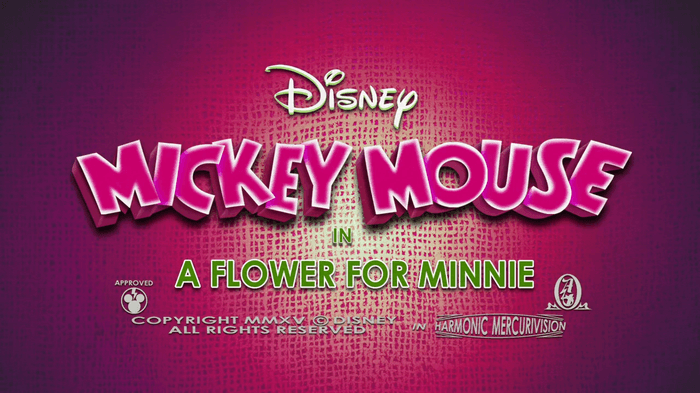
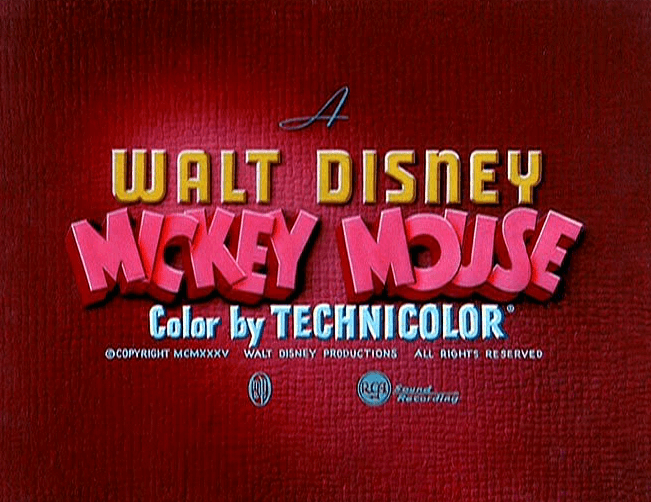
Yodelberg (1x02)
The Yeti
There are multiple nods to Disneyland's Matterhorn attraction in Yodelberg. First is the presence and design of the Yeti, whose bluish skin and red eyes seem deliberately modeled on the figure seen on the ride (pictured upper right). Second, the crashed bobsled train next to the yeti in the screenshot above looks very similar to the coaster trains seen on the Matterhorn (pictured lower right).

Swisska-soundtrack
The music in Yodelberg is an arrangement of Swisskapolka, originally written for Disney's 1960 live action Swiss Family Robinson film. The song can still regularly be heard today while walking through Walt Disney World's Swiss Family Robinson Treehouse attraction.
Compare the beginning of Yodelberg to 0:16 in Swisskapolka.
Croissant de Triomphe (1x03)
The Castle
In Croissant de Triomphe, Mickey is launched across Paris toward a very recognizable castle, and inside finds Cinderella and Prince Charming, as seen in Disney's 1950 adaptation of Cinderella.
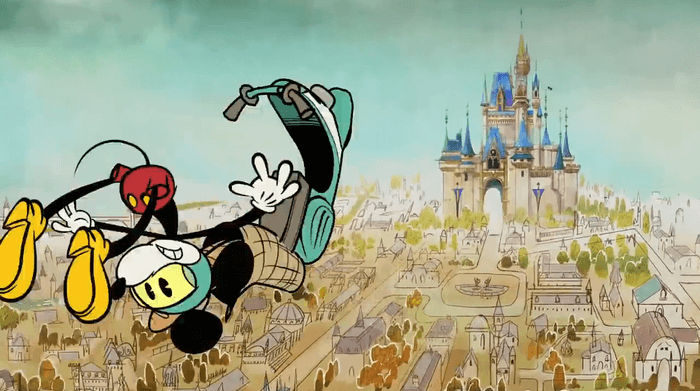
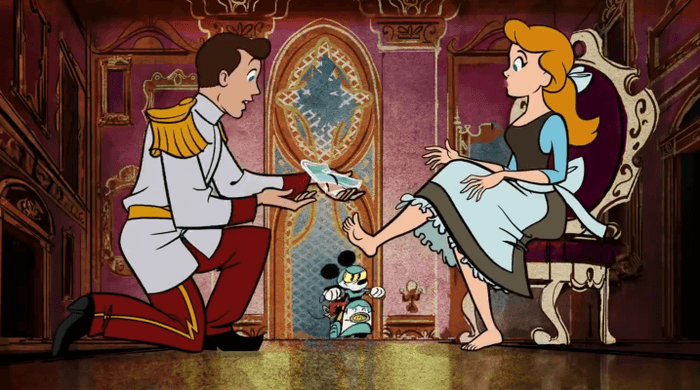
Fittingly, the castle is modeled on Walt Disney World's Cinderella Castle in Florida.
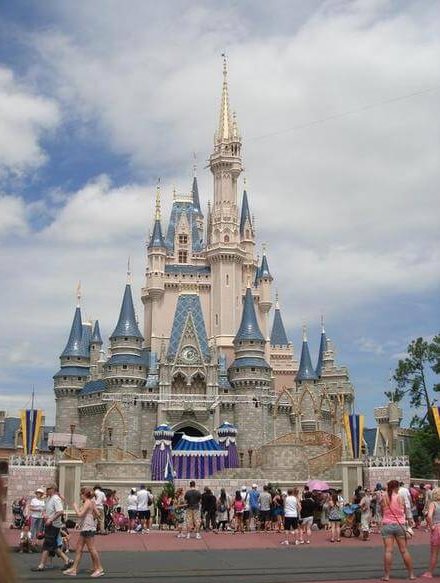
It's worth noting that the actual Disney castle located near Paris, in Disneyland Paris, is in fact Sleeping Beauty's castle, and not Cinderella's. However, Disney's version of Cinderella has a strong connection to France. Though the earliest published version of the tale comes from Italy, the version on which the Disney adaptation most closely resembles is that of Perrault, published in French in 1697. Though never explicitly revealed in the film, it is often assumed to be set in France given the origin of the story and artistic choices such as the depiction of architecture.
Tokyo Go (1x05)
Tokyo Go features several references to Walt Disney and his lifelong love of trains.
Walt's Barn
Mickey's destination at the end of the short, a barn with a miniature ridable train behind it, is based on Walt Disney's home in Homby Hills, CA in the early 1950s.
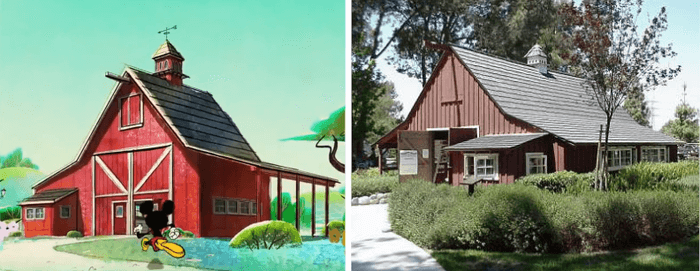
The barn was built as a replica of the one at his childhood home in Marceline, MO and used as a workshop in which Walt worked on model trains.1 As seen above, the exterior of the animated barn bears a close resemblance to its real-life counterpart. What it's doing in the vicinity of Tokyo is another matter.
Walt's Photo
A photo of Walt himself, presumably aboard the Disneyland railroad, is featured in the shot below, on the right.
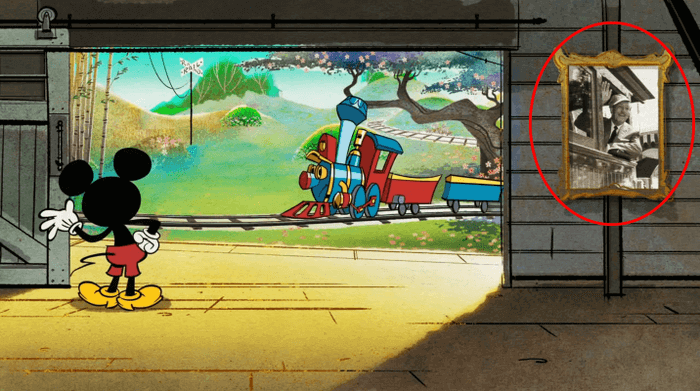
The Carolwood Pacific
Walt's backyard train was known as the Carolwood Pacific. The shot of Mickey acting as train conductor seems inspired by the photograph of Walt seen below.
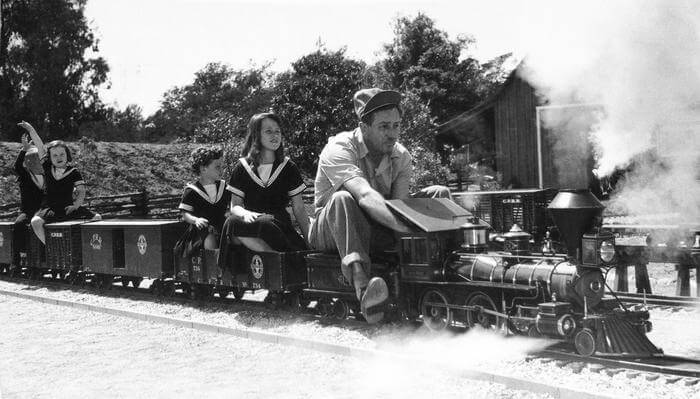
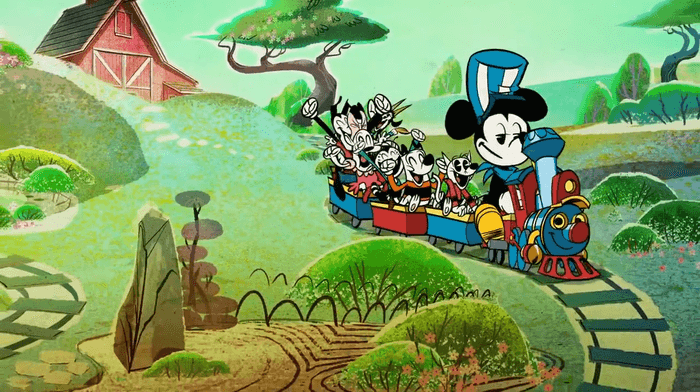
Casey Jr.
The train at the end of this short actually serves as a double reference to both the Carolwood Pacific and Casey Jr. from Disney's 1940 film Dumbo, seen above. Note the face on the engine and the coordinating colors.

Gasp! (1x07)
Bianca the Goldfish
This short is not the first time Mickey has been seen with a pet goldfish.
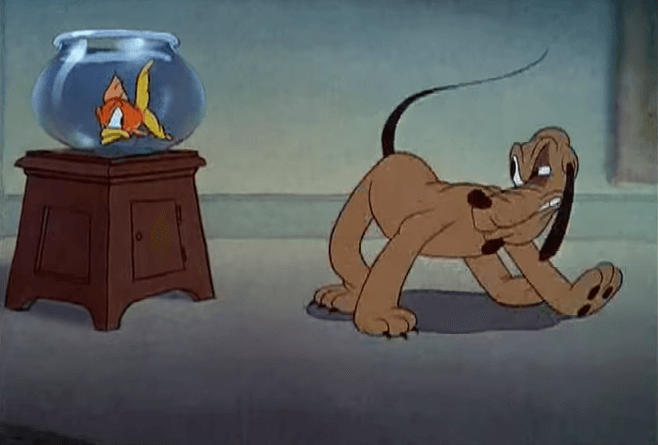
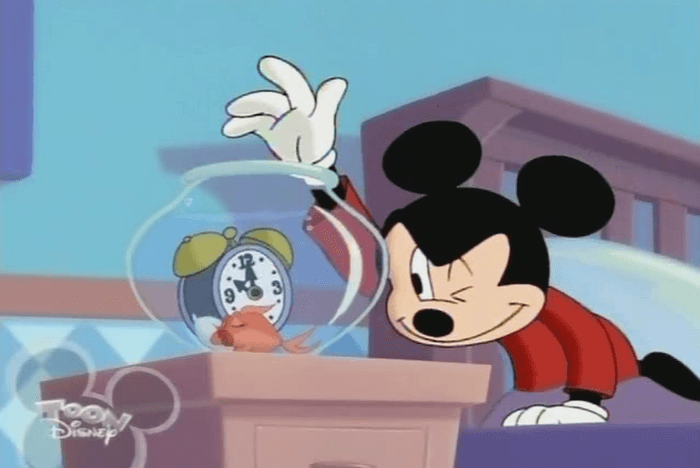
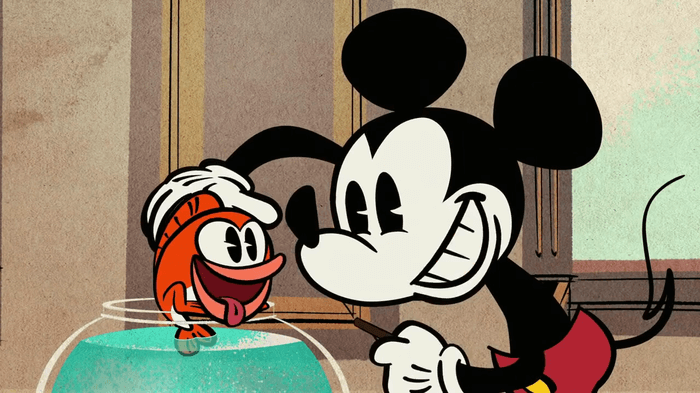
An unnamed pet goldfish was first seen in the 1938 short Mickey's Parrot. In Lend a Paw (1941) the goldfish was seen again and referred to as Bianca by Mickey. Her next appearance (again unnamed) was in the House of Mouse short Hickory Dickory Mickey (2001). In Gasp!, the goldfish's name is Gubbles.
Given that Figaro, originally seen in Pinocchio, was reappropriated as Minnie's pet cat starting in 19442, Mickey's goldfish could be seen as a nod to Geppetto's other pet in Pinocchio, Cleo the goldfish.
Bad Ear Day (1x09)
Clara Cluck
At the end of Bad Ear Day, Mickey's effort to get his ears back are shown to have been in vain, as his date with Minnie is comprised of listening to a chicken cluck Wagner.
The chicken is none other than Clara Cluck, whose shtick in several classic shorts was "singing" (actually dramatically clucking) arias. Her first appearance (middle image below) was in the 1934 short Orphan's Benefit. Note that her modern colors are a departure from her original appearance.
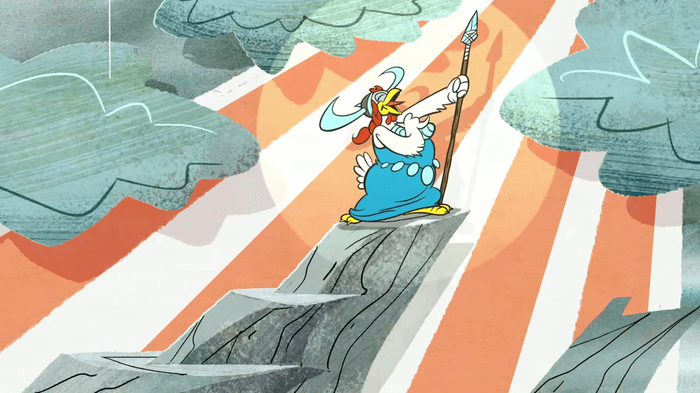
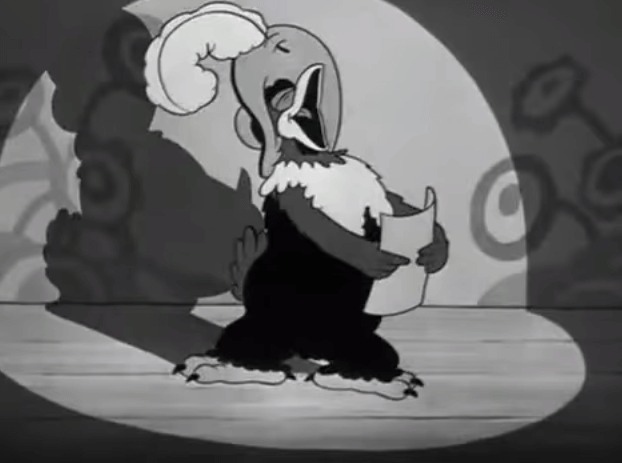
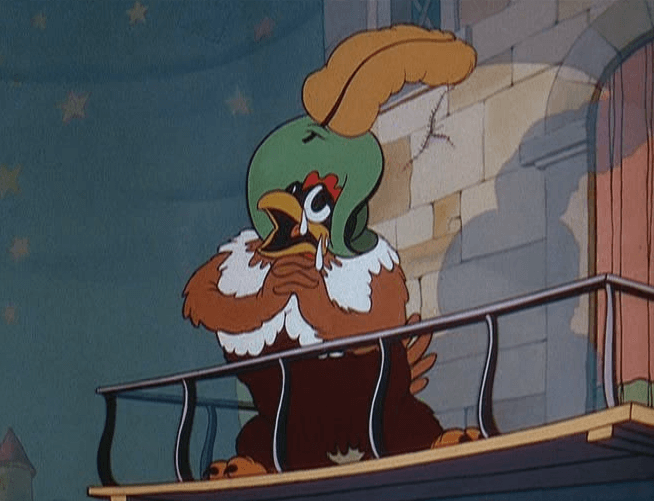
Clara also appeared in multiple Mickey Mouse Works/House of Mouse-era shorts of the late 1990s and early 2000s, but not in her diva role.3 Thus, her Bad Ear Day appearance can be seen as something of a return to form.
O Sole Minnie (1x11)
The Whale
The operatic whale that pops out of the Venice canal in this short works as a hilarious non-sequitur, but actually comes from a somewhat forgotten Disney short called The Whale Who Wanted to Sing at the Met.

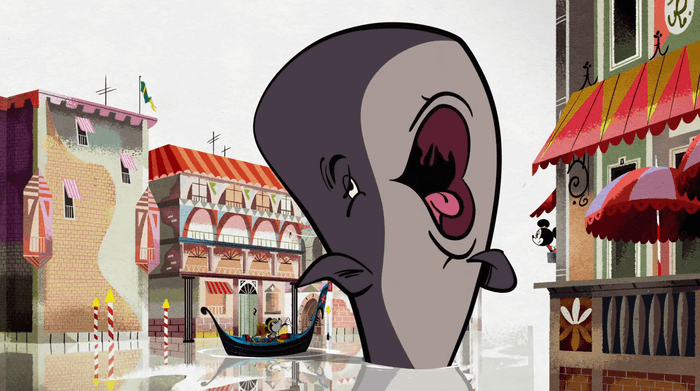
The original short was first released as part of Make Mine Music in 1946, one of Disney's "package" films of the postwar period.
it's a piccolo mondo
One of the buildings Mickey bounces off when flying over Venice can be seen as an homage to the exterior of it's a small world in Disneyland.4 More specifically, it seems to be inspired by a specific piece of concept art created for the attraction by Mary Blair (whose importance to Disney history cannot be overstated).


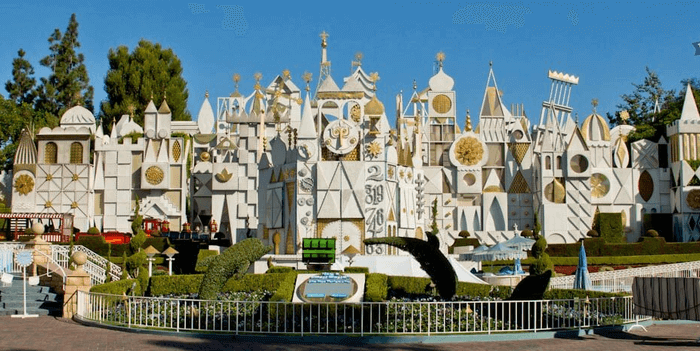
A great deal of the background detail in this short seems inspired by Blair's geometric, colorful style.
Potatoland (1x12)
The namesake of the episode, a makeshift amusement park made of potatoes created overnight by Mickey and Donald, contains many references to real-life Disney parks (primarily Disneyland in California).
Disneyland Entrance
The Potatoland entrance sign bears resemblance to Disneyland's entrance sign from 1989-1999.
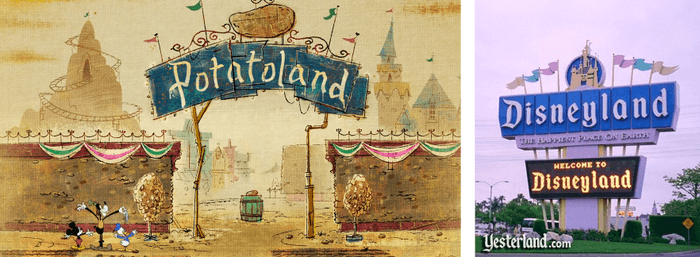
The background features a roller coaster based on either Big Thunder Mountain Railroad, found in many Disney parks worldwide (including Disneyland), or possibly Disneyland's Matterhorn.
Potatoland Skyline
The overview shot of Potatoland below contains spud-quivalents of several Disney parks attractions.
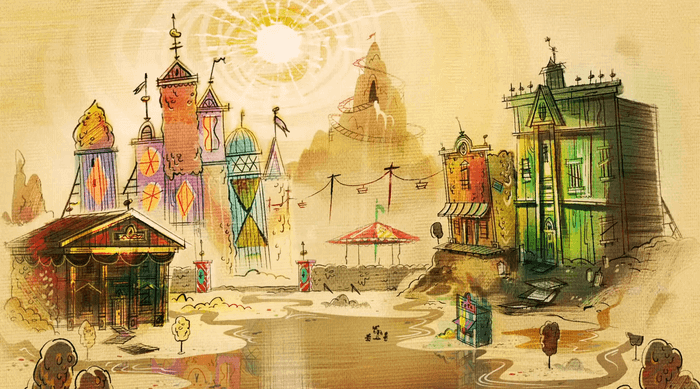
-
The mountainlike structure on the far left looks similar to the rock spire of Big Thunder Mountain Railroad, which is also on the lefthand side of Potatoland's real-life counterpart.
-
The brightly colored building is it's a small world.
-
The mountain with the roller coaster is the Matterhorn (based on its location in the "skyline").
-
Across the middle of the central mountain is a Skyway. All real-life Disney skyways are now closed (1994 in Disneyland and 1999 in Walt Disney World).
The Penny Arcade
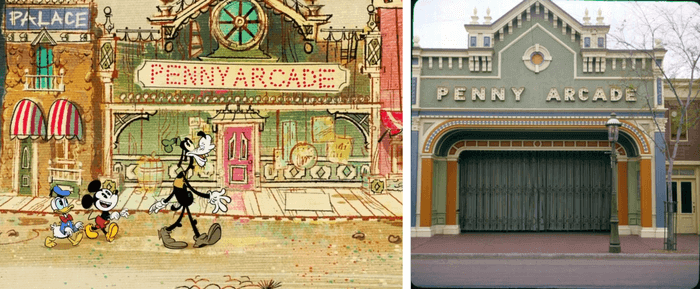
Potatoland's Main Street, based on the Main Street sections of other Disneyland-style parks, contains a Penny Arcade that is closely modeled on that of Disneyland. The actual arcade has been a reddish color since at least the mid-2000s, however the green color replicated in the short was how the building was painted at least back to the mid-1960s.
The Haunted Potato Mansion
The exterior of the Haunted Masion-like ride in Potatoland is again modeled on its Disneyland counterpart. The southern manor aesthetic of the Disneyland facade is unique among Haunted Mansion attractions in Disney parks.
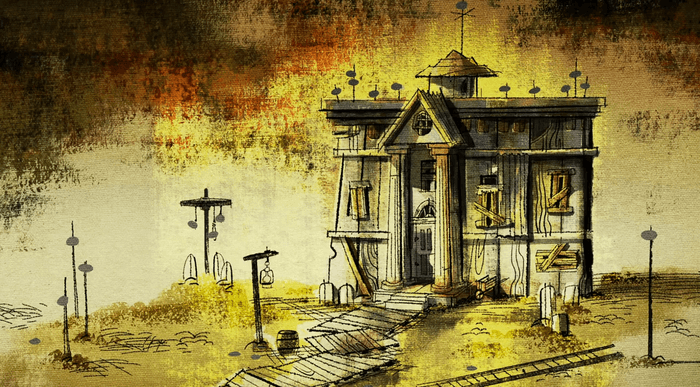
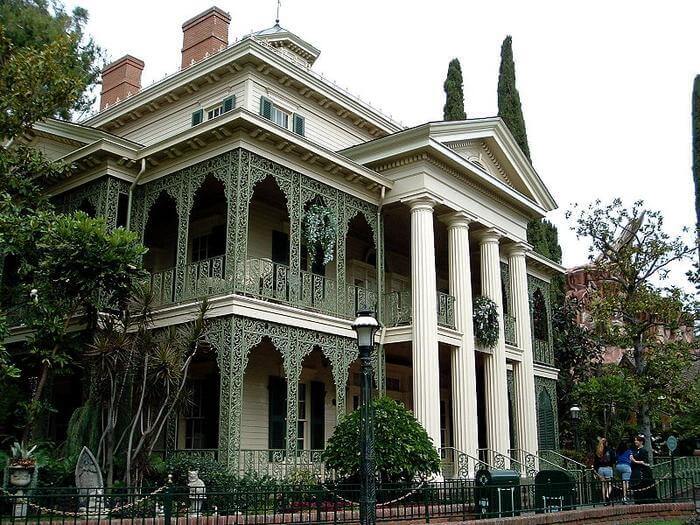
During the knockoff haunted mansion ride, Mickey provides a "Ghost Host" voiceover in the style of Paul Frees, the original narrator of the attractions. Part of Mickey's narration is a nonsensical takeoff of the actual attraction's script.
The original script:
As the moon climbs high o'er the dead oak tree Spooks arrive for the midnight spree
Mickey's version:
As the potato creeps o'er the dead oak tree Potatoes arrive for the midnight spree!
Great Moments with Mr. Potato
One of the shows Goofy sees in Potatoland is a parody of Disneyland's Great Moments with Mr. Lincoln, first exhibited at the 1964 New York World's Fair.
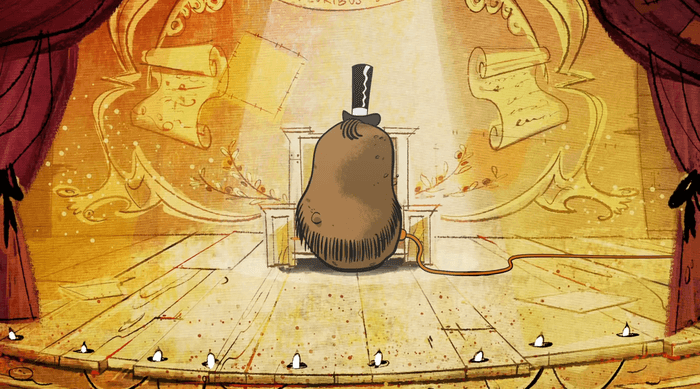
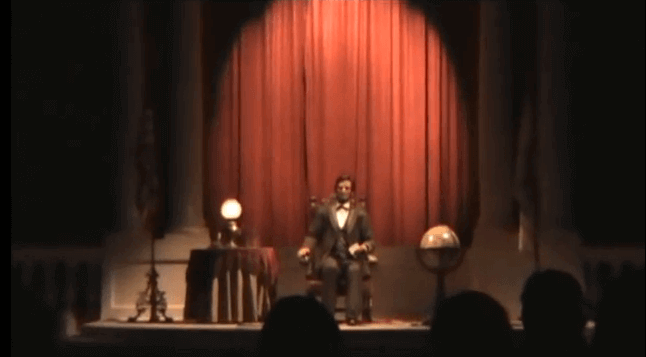
Gravy & Asphalt
At the end of the short, the sun melts the park because it was constructed using gravy in place of mortar. Oddly enough, this silly plot point parallels an actual event in Disneyland's history.

On Disneyland's opening day in July 1955, the temperature was well over 100°F, which "melted" (softened) the still-setting asphalt of the park's walkways. This caused some guest's heels to sink into the asphalt and get stuck.5 Thus, the sun melting a theme park has some real-life precedent.
The Adorable Couple (1x19)
The Band Concert
The band playing at the bandstand in this short resembles the band Mickey conducts in the classic 1935 short The Band Concert. Note the similar costumes, instruments, and characters.
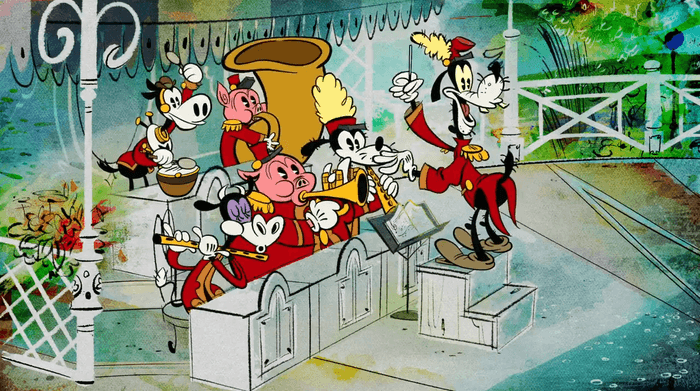

Also somewhat notable is the appearance (not pictured) of the Beast and Belle from the 1991 film Beauty and the Beast.
Notes
-
Figaro was first theatrically depicted as Minnie's cat in First Aiders (1944). ↩
-
See Minnie Visits Daisy (2000), Double Date Don (2001) ↩
-
The international small world attractions (Tokyo, Hong Kong, Paris) feature similar exteriors to Disneyland's. ↩
-
It is difficult to find a primary source for the oft-repeated high heel story. The best source I could find was a 2000 interview with Art Linkletter, who was present on opening day as the host of the live television coverage. ↩